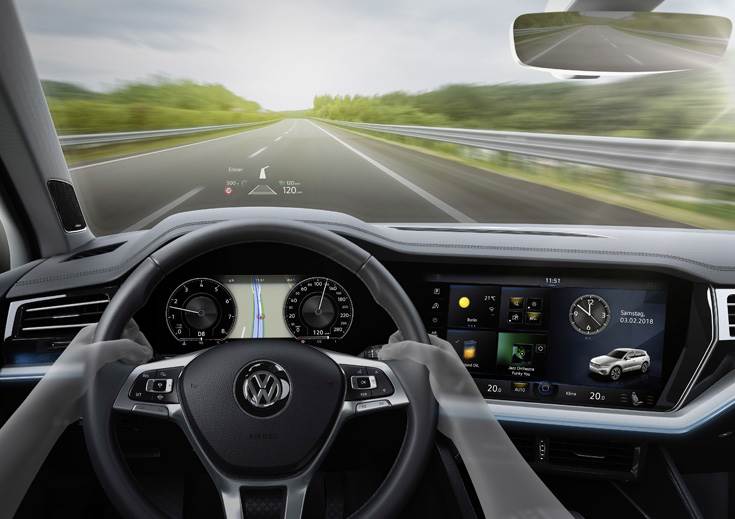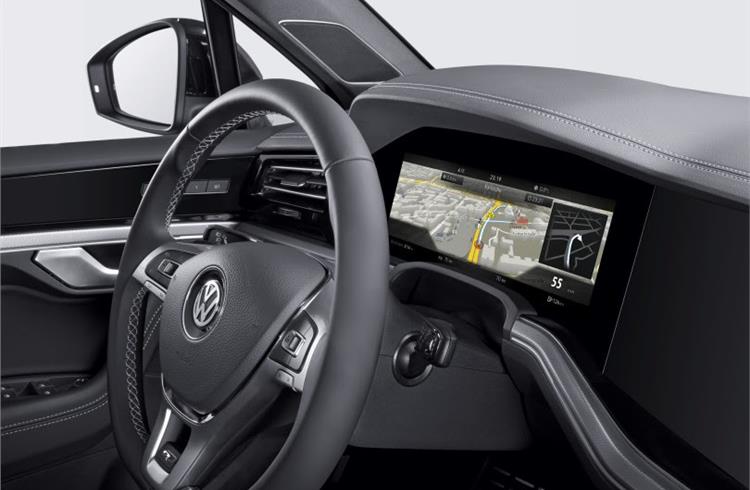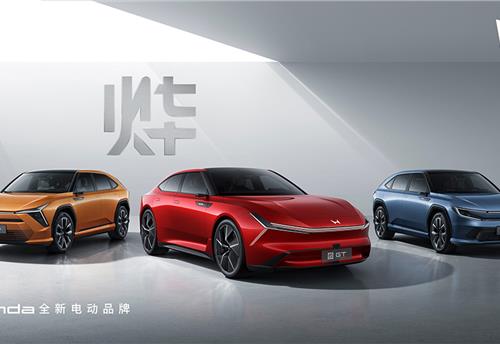World’s first curved instrument cluster debuts in new Volkswagen Touareg
Bosch opens up a new dimension in vehicle cockpits; reliable recognition of information, even at the edges of the screen; new display control allows drivers to select what they want the instrument cluster to feature.
Bosch has put the world’s first curved instrument cluster in the cockpit of a mass-production vehicle – the new Volkswagen Touareg. “The days of flat instrument displays are over. With the world’s first curved instrument cluster, Bosch is opening up a new dimension in vehicle cockpits,” says Steffen Berns, president of the Car Multimedia division.
The ‘curved’ instrument cluster will be celebrating its debut in the Innovision Cockpit of the new VW Touareg. This means that Volkswagen is now replacing analog display technology behind the steering wheel with a freely configurable, high-resolution, curved display. Depending on what the driver wants to see at any given time, the screen is able to display large-area navigation maps, driver information or the status of the assistance systems.
The secret behind the sharpness and contrast of the new displays is a new manufacturing process, with which the instrument cluster reflects more than four times less light, even in the sunlight.

The new instrument cluster’s curvature mimics the natural curvature of the human eye. As a result, the driver is able to much better detect indicator lights and warning signals, even at the edge of the screen. This also gives it a clear advantage over the familiar curved monitors at home in the living room, where only one person can sit at the optimum viewing angle at any one time. In contrast, the curved instrument cluster in a vehicle always optimally accommodates the driver’s view.
“Drivers benefit from curved instrument clusters in terms of safety and convenience. At the same time, this type of display gives automotive manufacturers greater freedom and more space in the design of the cockpit,” says Berns.
Nowadays, automotive manufacturers increasingly want to avoid using mechanical switches, knobs, and controls. However, Bosch says, large-sized monitors are very high on the wish list – as is the new curved instrument cluster. Beneath its surface, it combines a large number of digital displays, while taking up almost two centimeters less space than a non-curved screen of comparable size.
‘Whatever you want’ in the cockpit
Speedometer, navigation maps, and telephone list: the contents displayed on the instrument cluster with a screen diagonal of close to 31 centimeters (12.3 inches) are determined by the driver depending on the driving situation and personal preference. An intelligent control system, which – invisible to the driver – is concealed behind the cockpit on a control unit. It ensures that the driver always sees exactly the screen contents that he wants to see at a glance. There is a choice, for example, from between detailed information on the current journey, the navigation map, telephone contacts, or details on the playlist currently playing. Each piece of information can be displayed over the entire screen or shown in combination with other contents. So anyone who wants to display the navigation map and the telephone list in addition to the traditional speedometer can do so easily and conveniently by making those selections using the multifunction steering wheel or the infotainment’s touchscreen. It is also possible to perform a targeted zoom into the navigation map directly on the instrument cluster – another novel feature that will debut in the Touareg’s Innovision Cockpit.
Four times less glare
Vibrations, temperature fluctuations, susceptibility to malfunctions: the demands placed on vehicle displays in terms of quality and robustness are high. In addition, the driver must be able to reliably read screen displays even when the sun is shining directly on the vehicle display. Bosch says its new curved instrument cluster uses a special manufacturing process to defeat this problem.
Up to now, this process was used to make screens for flat displays with high contrast, even in bright ambient light. In cooperation with partners, Bosch is now using this process for the first time in the large-scale production of a curved display for the vehicle cockpit. In optical bonding – which is what this process is called – a thin liquid is used to bond the instrument display and glass directly to each other. Thanks to the perfect connection of the two components, the instrument cluster reflects more than four times less light. For the driver, this means that there is virtually no glare and the display is rich in contrast and clear in both direct sunlight and darkness.

RELATED ARTICLES
Honda reveals new Ye series of EVs for China
A second set of Ye EVs will be revealed in the coming months, completing the six-car line-up for China.
GM awards 94 of its top global suppliers for excellence
While 86 suppliers were recognised with a Supplier of the Year award, an additional eight Overdrive Awards were handed t...
Magna bags five 2023 Supplier of the Year awards from General Motors
Awards secured across four Magna product areas – body & chassis, exteriors, powertrain, seating; GM has recognised Magna...





 By Autocar Pro News Desk
By Autocar Pro News Desk
 14 Nov 2018
14 Nov 2018
 10461 Views
10461 Views









